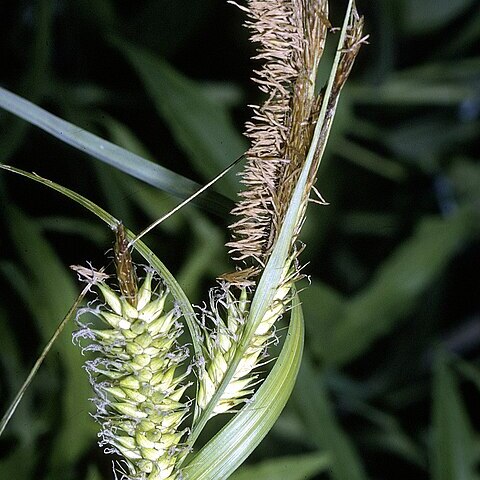Plants colonial; rhizomes long-creeping. Culms lateral, coarse, trigonous, 50–135 cm, smooth or somewhat scabrous-angled distally. Leaves: basal sheaths reddish purple, strongly fibrillose, bladeless; longest ligules 13–40(–56) mm, much longer than wide; blades glaucous to pale green, M-shaped, (5.5–)8.5–21 mm wide, glabrous. Inflorescences 17–60 cm; proximal 2–4 spikes pistillate, ascending to arching; distal spikes erect; terminal 3–5(–7) spikes staminate. Pistillate scales lanceolate to ovate, apex obtuse to acuminate, glabrous, awn 0.3–3.5 mm, ± scabrous. Perigynia ascending, usually strongly 14–28-veined, narrowly ovoid to narrowly ellipsoid, (4.5–)5.2–7.8 × 1.6–2.5 mm, glabrous; beak obscure, 0.5–1.6 mm, bidentulate, teeth straight, 0.2–0.7(–0.9) mm. 2n = 74.


